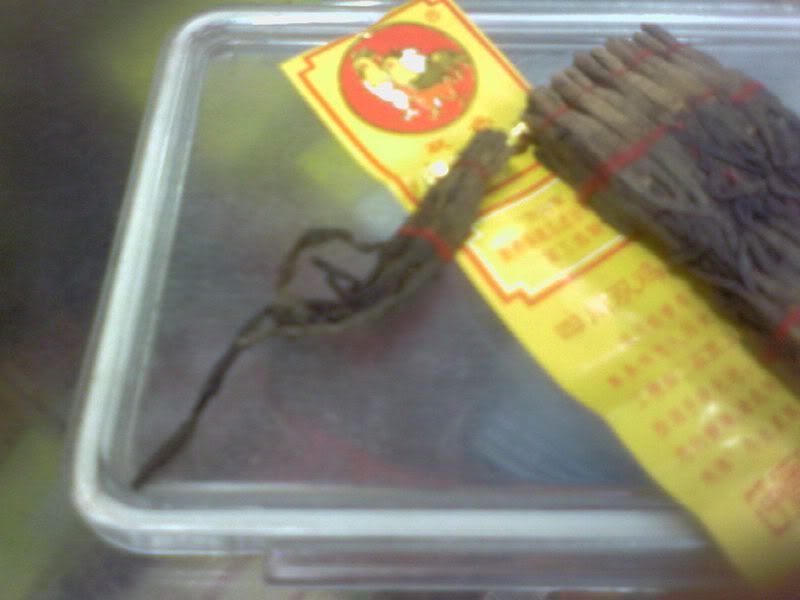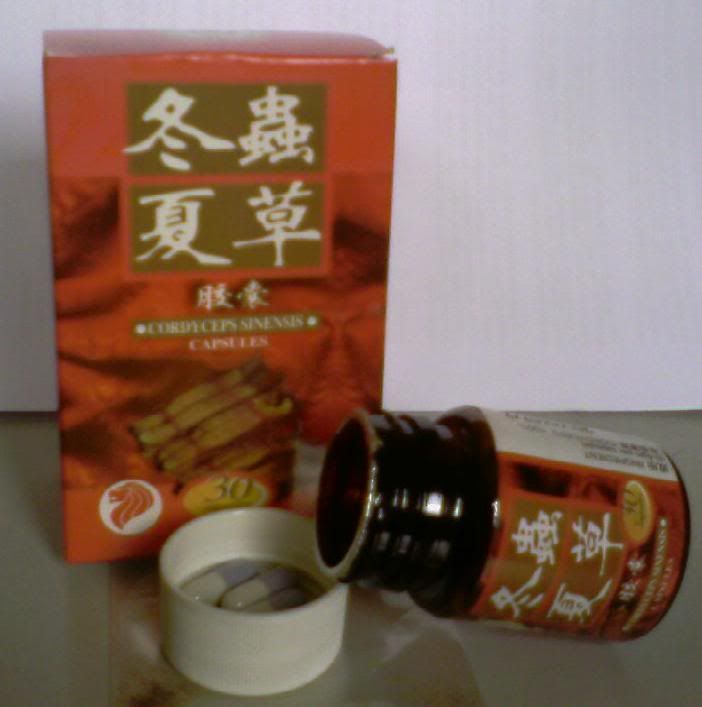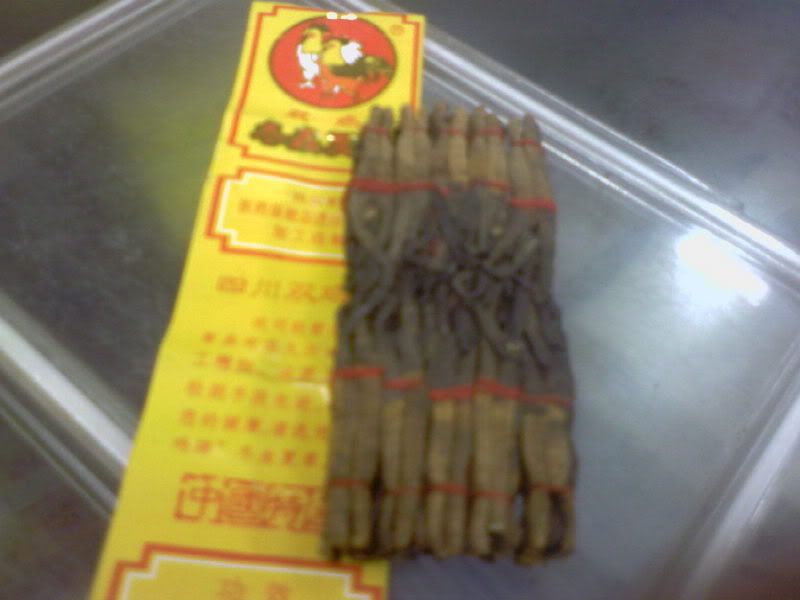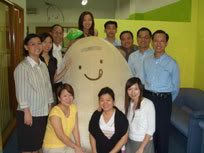Tuesday, December 05, 2006
Singapore Idol
More interesting is the social response towards Singapore Idol, which is comparable to that in the US towards American Idol. The viewing public in the US accepts the show as a nationwide talent search, and an opportunity to rise to fame quickly. Singaporeans picked up their cues from watching American Idol and show similar enthusiasm in participating in the show. The appearance and success of quirky characters in the auditioning process such as William Hung in American Idol has spurred many similarly "quirky" individuals to participate not only in subsequent American Idol auditions, but also in Singapore Idol, in the hopes of catching an elusive five seconds of fame. Examples of such characters in Singapore Idol include the "Careless Whisperer" and a kung-fu enthusiast from the heartlands. The audience also interacted with the show in a similar manner to US viewers, voting furiously for their favourite contestants and using banners and customized cheers to show their support in the studios.
Monday, December 04, 2006
Cosplay
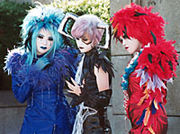
Cosplay is a hobby, a lifestyle - Likeminded people gather to see others' costumes, show of their own elaborate handmade creations, take lots of pictures, and possibly participate in best constume contests.
The Singapore Cosplay Club (SCC) was first set up in 2002; which organizes gatherings and events. Cosfest is the annual event of Singapore Cosplay Club and it is the biggest cosplay event in Singapore. The starting of such a Club in Singapore thus signals the societal's growing acceptace towards this lifestyle and hobby. (http://www.sgcosplayclub.org/)
 Cosplay is a product of globalization. It has spread first to parts of Asia, and then around the globe, through mediums such as mass media and the Internet.
Cosplay is a product of globalization. It has spread first to parts of Asia, and then around the globe, through mediums such as mass media and the Internet.Cosplay; a lifestyle of Japan subculture has now been adopted by Singaporeans.
They actively participate in Cosplay events and also interact socially and competitively within the community. The Premier Singapore Cosplay Kingdom is an online community where Cos-members socialize, create Cosplay Teams, organise outings, share photos etc.
Although the registered Cosplay community is still relatively small (approximately 650 registered members); the social response has been positive. The existence of an online forum and community and also Cosfest, an annual event indicates that Singaporeans are accepting this lifestyle and their participation in such activities, competitions and events signal their keen interest in this growing phenomena.

Thursday, November 23, 2006
The Middle Finger
We all know what the middle finger is. We know what it means when we're exposed to it, and sometimes, we use it to express ourselves too. It is a global culture because it didn't originate from singapore, unlike for instance, singlish.
I'm not exactly sure where this act came from, but i'm sure we'll agree that it isn't a hybrid culture that emerged from the Chinese , Malay and Indian migrants. If so, how does this act, wherever it came from, become a part of our lives?
My best guess would be the contact with hollywood movies. Or it could be due to the period of british colonialism? Recall the first time you saw the middle finger, was it from a foreigner or a local? For most of us, we would have learnt it from our peers. For others (including those peers whom we learnt it from and their predecesors), it most definitely would be from hollywood films. How else besides social interaction can you learn something totally new? It has to be the mass media.
If singaporeans learnt about the middle finger from hollywood, then it would make sense to think that everywhere the hollywood reached would have learnt about it too.
So, the next time you brandish your middle finger, you know your participating in a global culture. Cheers!
Dongchou
Monday, November 20, 2006
from local to global to local

What first came to my mind when asked about a real life example of hybridization is this website that I came across earlier in the year - it says mee goreng is a dish that is culturally representative of Singapore because its preparation entails the labour and commodities from the different racial groups in the 'multiracialism' image that the city-state wants to project to the world.
I then took a trip to a nearby hawker centre to see if what is being posted in that website is true. Indeed, I realized that except for Indian mutton and Chinese cabbage, the rest of the details are true. But I'm also sure that the mutton and cabbage do not come from Singapore as well. I thought it is a good example of a cultural hybrid because of the various elements present in the final product. With globalization (after rationalization and mcdonaldization), we obtain everything from almost everywhere as the production, distribution and consumption processes of goods and services are all sophisticatedly separated for better efficiency and quantity.
But as said in the tutorial discussion, this example simply remains a product globalization/hybridization that is not so much of a sociological interest if I do not consider the social reception and consequences of this product in the market. To that, I say that we have come about to make use of the global flows of goods and services to preserve a local culture and shape it accordingly to our wants and desires, such as an Indian hawker relying on the global distribution of his ingredients to keep cooking and selling a national dish, which is consequently marketed by our tourism board to the global and the media to the local. Likewise for French, Japanese or any chef who consistently has to maintain the local culture through preparing certain kinds of dishes. In so doing, the cultural products that we claim to be local are in fact, in our analytical attention, cultural hybrids.
Kean Bon.
Zhuang Yuan Fang- a Shopping Street in Guangzhou

Zhuang Yuan Fang is a popular shopping street for youths in
Like young people around the world, the youths of
Pham Tran Thu Nga
Friday, November 17, 2006
Bobble Head Dolls
 A little HISTORY
A little HISTORYA bobblehead doll, also known as a bobbing head doll or wobbler, is a type of collectible doll. Its head is often oversized compared to its body. Instead of a solid connection, its head is connected to the body by a spring in such a way that a light tap will cause the head to bobble, hence the name.
Bobbleheads as we know them today began to gain ground in the 1950s. By 1960, Major League Baseball had gotten in on the action and produced a series of papier-mache bobblehead dolls, one for each team, all with the same cherubic face. Over the next decade, after a switch in materials from paper-mache to ceramic, bobbleheads would be produced for other sports, as well as cartoon characters. One of the most famous bobbleheads of all time also hails from this era: The Beatles bobblehead set, which is a valuable collectible t
 oday. By the mid-1970s, though, the bobblehead craze was in the process of winding down.
oday. By the mid-1970s, though, the bobblehead craze was in the process of winding down.My Findings
It would take nearly two decades before bobbleheads returned to prominence. The Solar version of the bobble heads are OUT and you no longer need to tap to wobble the head, it is automatic.
I wonder if u guys remember about the first version of e solar powered bobble head toy by a japanese company, which became the craze in Singapore 2 years back.

So bringing the bobble heads dolls from America to Japan, adding on more features to it (the solar powered pannel and putting on a tag line saying that it help to destress people who looked at it) and then replacing them back onto the shelf. Isn't this globalisation and hybridisation?
Now as the trend is dying off, they up with the different version of solar bobble heads such as DISNEY characters, the PLANT or the LUCKY KITTY with good luck charm meaning attached (shown in e pictures)
The Social Implications.
Yes, bobble head toys are around in for at least 50 years with its distinct Big heads wobbling up and down. But what i am trying to point out here is the globalisation of perception towards cuteness - "Kawaii-ness". Don't you think that even the Disney characters of these Solar powered bobble head dolls are shaped into this roundness, different from the usual representation of the characters. Instead, personally, I think they have the style of Hello Kitty.
These toys are found in "ACTION CITY" whose target market is not simply limited to the kids, but teens, young adults and even working adults who are the ones that have buying power. People who buys them are usually attracted to the "kawaii-ness" rather than the practical aspect of it(irrational buying). Whether the consumers treat them as collectible items or other purposes, is really up to them.
-Waiwai
Thursday, November 16, 2006
Singlish: A hybrid language?
Firstly, it is important to note that Singlish is officially negatively valued. Rather than seeing it as a result of the enrichment of gene pools (Pieterse, 1995), Singlish is officially seen as a language which is not to be used in school and work. Those who speak Singlish are identified as heartlanders, as opposed to cosmopolitans who speak Standard English (Goh, 1999). Even local sitcoms were not spared as a popular sitcom character, Phua Chu Kang, was told to go for English lessons to tone down his supposedly bad English.
With regards to the social response to this phenomenon, I think I can speak for most Singaporeans when I say Singlish has become part and parcel of our lives. Like what is discussed in tutorial, it is very easy for a Singaporean to identify where a person is from when he/she hears Singlish being spoken. Like what Dr. Pereira said, the person can only come from two places, Singapore or Malaysia. Thus, one can ascribe to a Singlish speaker the identity of a 'true' Singaporean, supposing there is a Singaporean identity.
Lastly, I would like to say that Singlish is not the only hybrid language we can talk of. Many other languages, including English, are indeed hybrids which are consequences of language contact. Yesterday, I came across an article in The Straits Times which was about Hinglish, a hybrid between English, Hindi, Punjabi and Urdu. It is stated Hinglish is a language that underlines the globalisation of India. The article did not state the official state response to this phenomenon but like Singlish, it is part of everyday life.
And if Singlish has come to be part of our everyday lives, I think Singlish, rather than being wiped out through language planning, is here to stay.
-Rozana
Disneyfication
"I think what I want
a place where adults and children can experience together some of the wonders of life, of adventure,
and feel better because of it." - Walt Disney
Disneyland and Disney World is set up by Walt Disney in 17th July, 1955. From comics and cartoons to movies and theme parks, there are some fundamental elements that can be found consistently throughout all his many projects; namely, his desire to foster a love of learning in young people and give them the ability to boldly and openly engage the exotic and unknown. Disney has reached out to millions across the globe through its cartoon and most famously, Mickey Mouse. Besides the comics, cartoons, movies and themeparks as mentioned above, it has also expanded into merchandises like toys, clothes, stationary, soft toys, computer games and even the "Disney World on Ice" World Tour which attracted tens of thousands to pay to watch the performance. Today, in an attempt to draw more crowds and give a more comprehensive Magical Kingdom experience, hotels and residences were introduced to the theme parks in the 1990s to integrate it into a resort.
Concurrently, there might be a glimpse of hybridization attempts as each Disneyland has got its own speciality. Tokyo: Disney Seapark, Hong Kong: introduction of characters like Mulan. USA: Hollywood themes. Paris: naming of places and streets in french, Victorian streets and miniature Statue of Liberty.
Sociologically, I feel that what it is giving people is the feeling of entering surrealism, wanting them to feel pampered, "magical" in a fantasy realm that they would not want to leave, be it for the adults or for the children. Even for the adults, Disney is appealing to their feeling of nostalgia and their childhood dream or fantasy to engage them in this make-believe world so that they will stay and spend. Then, they would have achieved their objective.
Lin Jingpei
Monday, November 13, 2006
Globalization: Piano lessons
In the past, piano lessons are conducted individually. Nowadays, there are piano lessons in classes. It is a very mechanical and efficient process. The lesson plan is fixed. And people just attend the lessons, pay the fees once a month, and take exams. There is a focus on efficiency. 'Musical ability' is a product that is being sold.
People all around the world is graded by a same standard. Exams are conducted by ABRSM (The Associated Board of the Royal Schools of Music) using the same syllabus.
From their website, "Welcome to The Associated Board of the Royal Schools of Music, the world's leading music examining board. Over 620,000 candidates take our music exams each year in more than 90 countries around the world."
Many children are taking piano lessons. They do not have a choice as it is their parents who insisted on them taking it. More often than not, their parents have no prior muscial background. They want their children to take piano lessons because having musical abilities are seen as 'high class'. They get this notion from the media and society. It is globalization of values.
Leonard Huang
Thursday, November 09, 2006
The Food Court as an example of Hybridization
That is the US version of the food court — which is not that similar to the ones we have here in Singapore. In Singapore, instead of fast food outlets, the counters sell local fare similar to the type normally obtainable in hawker centres.
Hawker centres, which were built partly to address the problem of unlicensed street hawkers, are increasingly being replaced by food courts. This is due to the increasing affluence of the population, as well as the association of hawker centres with unhygeinic food and a less comfortable environment.
The local variation of the food court is extremely common, particularly in shopping malls. At a typical food court, patrons queue to order their meals at one of the many counters, then carry the meal to the common dining area on a standardized tray. This hybid combines local fare with the comfort of the fast food resturant’s clean environment.
The Social Implications
When the food court was first introduced in the early 90s, the price difference between the food court and the hawker center was not well-received. However overtime, the response towards the food court improved.This acceptance can be interpreted from two perspectives. Firstly, the ubiquity of the food court and dwinding of hawker centres has left consumers with little choice but to dine at food courts. In this case, the ‘choice’ to eat at a food court is made out of necessity or default.
However, the second perspective seems more realistic. Overtime, the price of food at hawker centres has gradually caught up with the prices of food at the food court. Therefore, the difference has become less distinct. This is the case whereby people actively choose to dine at the food courts instead of hawker centres because of growing affluence and accustomization to the comfort and system of the food court. Thus normalizing the food court so much so that it has become taken-for-granted.
As a side note, it is interesting how the local food court has been exported overseas in the form of Kopitiam food chains (in countries like China) and marketed as the “true Singapore taste”.
(Information from Wikipedia)
-Daniel Lee
Wednesday, November 08, 2006
Globalization of Oktoberfest


There is no doubt that the festival Oktoberfest has experienced Globalization, being celebrated all around the world. The original purpose of Oktoberfest was to celebrate the wedding of a Bavarian princess about 2 centuries ago. More information about the festival may be found at the official website or at wikipedia.
From 12th to 15th October 2006, Erdinger held an Oktoberfest celebration at China Square Central. Many things about it had nothing to do with Oktoberfest at all, such as the date of the festival, the size of the mugs and the type of music played.
The differences are many, but the point I'm trying to make here is that the product (ie. the festival) as well as the meaning behind ithas been globalized . However, the purpose of the festival is just another one among many to have fun and get drunk. Thus, what we see here is the globalization of the purpose to be merry as manifested in Oktoberfest. The social response to this? I guess the people embrace it.
- Wilson Liong
Monday, November 06, 2006
hybridisation - the peranakan culture
The origins of Peranakan culture apparently stems from when the Chinese came down to Malaya in the 15th century. Some sources claim that the Chinese and Malays intermarried – but this can be refuted, as they don’t look like they’ve been mixed racially, and also the Malays were at the time Muslim, which means that the Chinese would have had to convert to Islam, which wasn’t the case. So it’s suggested that the Peranakan culture is more a result of the Chinese having to adapt to the Malay culture in Malaysia and Singapore.
Hybridisation can be seen through some aspects of Peranakan culture.
Religion – the Peranakans didn’t take up Islam, and stuck to their mixture of Taoism and Buddhism. However, lots of Peranakans are now Christian, thanks to the British influence during the colonial times.
Language – Baba Malay is a cross between Malay, Hokkien (or any other dialects) and a bit of English. Generally it’s the Hokkien syntax with Malay vocabulary. The Hokkien used, though, doesn’t actually have the proper Chinese intonation.
Dressing – the women dress in sarong kebayas, with a very delicate ornate blouse, held together with the kerosang. The men (at least in the past few decades) generally wore Western clothes, as they were proud of being English-educated, and working.
Customs – some customs are still Chinese, like the red eggs after the first month of a birth, Chinese New Year and tea ceremonies in weddings. However, it’s quite diluted, so it’s not as strong as the way the Chinese do it.
What’s most exciting, of course, is food – it can be generally seen as Chinese ingredients with Malay herbs and spices. Though it looks quite Malay, thanks to the curry-looking dishes, pork is just about the main meat of Peranakan cuisine, which isn’t very Malay. Peranakan food has lots of coconut milk, and spices like blue ginger (lengkuas), lime leaves (limau purut) and black sauce. And of course, there’s the staple achar and sambal belacan at every single meal. The sambal belacan recipe varies from household to household. And Singapore’s most famous cook, Mrs Lee aka SM’s mother, was Peranakan. (Though now she’s not allowed to be.)
Social impact – now the Peranakan culture is dying out a bit, thanks to Singapore’s CMIO policy, the Speak Mandarin Campaign and so on. Lots of Chinese don’t even realize they’re Peranakan. This very special culture has been sucked in into the “Chinese” racial category, so ethnicity is completely ignored. In the 1970s, Peranakan children were allowed to learn Malay in school, but now they’re forced to learn Chinese as it’s their true (designated) mother tongue.
There are lots of famous Peranakans in Singapore – including perhaps our most famous theatrical export, Emily of Emerald Hill.
However, Peranakan culture still does exist in this country, and there are lots of Peranakans who are aware and proud of their heritage. There are Peranakan restaurants, organisations, and even a Peranakan museum, which perhaps suggests that while the government wants them to be lumped in with the rest of the Chinese, they shouldn't forget their true roots. Which is rather confusing, but this IS Singapore.
Friday, November 03, 2006
OH BALLE!
The new Bhangra combined traditional instruments with the drum & bass beats associated with disco in the 70s. Singapore has its very own Bhangra night, that is usually organized on the eve of public holidays like Deepavali, Hari Raya and Christmas. On a typical Bhangra night out, you will be able to hear a mixture of traditional Bhangra, and the commercialized R&B, reggaeton beats that dominate the clubbing scene on the dance floor. This is an example of hybridization.
Here are some examples
1. B21 - Darshan
http://youtube.com/watch?v=v-SmHxgxW9w
This is traditional Bhangra music. You can check out the funky dance moves and traditional dresses in the video. This is a recent song and was also in the soundtrack of the movie "Bend it like Beckham".
2. Sukhshinder Shinda ft. Takeova ENT - Punjabi Clap
http://youtube.com/watch?v=0NPI4wQ3bk0
Shinda is one of the pioneers of the modern Bhangra, along with Bally Sagoo, both from Birmingham. This song has the classic combination of rap, R&B and Bhangra mediums. The dancing also incoporates western and traditional Punjabi Bhangra dance moves. You could say this is hybridization.
3. Kray Twins ft. Twista & Lethal Bizzle - What We Do
http://youtube.com/watch?v=IpqXQstedFE
Here comes the interesting part. The Kray Twins are really big in the US and UK. They are the two Pai-s (brothers in Hindi) in the music video. They are music producers. So much so that even accomplished artists like Twista has approached them to do some productions together. You could call this a form of glocalization
There are many examples of glocalization in the UK-Hindi Bhangra scene, with artists like Jay Sean, Juggy D & Rishi Rich making it big both in the UK and across the Atlantic and of course, here in Asia. The 1st song in the clip below is a UK number one club hit.
Rishi Rich, Don D & Juggy D - Nahin Jeena
http://youtube.com/watch?v=moFd-6sim0U
Thats about it with the Bhangra music scene, globalization, hybridization and glocalization. Keep it real, safe.
Melvin
“SERGE DE NIMES” JEANS IN OUR GENES!

In 1853, Levi Strauss arrives in San Francisco together with some rough canvas to use for tents and wagon covers for the miners. however, the miners soon realized that it is not these that they need, they needed something else to cover themselves... pants! This is due to the fact that they couldn’t find a pair of pants strong enough to last their hard labour. Strauss had the canvas made into pants. and soon he substituted a cotton cloth from France called "Serge de Nimes," which became known as denim.
Just like any other form of popular culture, it got popular in America in 1906s. Back then, young adults and teenagers wore jeans as a form of protest against conformity. This quickly evolved into a general fashion trend in 1970s. Today, the blue jeans are everywhere – in the classroom, on the streets, in boutiques, both big and small, and of course around humans’ waists.
The question : how did this culture spread to the rest of the world when it was actually just an American way of clothing? The answer : Cross border cultural contact!
The question : What happened when there is cross border cultural contact?
Cross cultural contact brings about a homogeneity in culture in the world and in this case, clothing culture around the world. Today, people are wearing jeans, regardless of race, religion and gender. It is indeed a form of culture, an American culture, but now a global culture. Is this globalization? YES it is. Not only has it revolutionized lifestyle, altered the norms of gendered dress code, it has also seeped into the minds of the consumer to create consumerism. Jeans are not just jeans, jeans has become a way of living, jeans has become a way of life. When there is insufficient time, when pace of living gets faster, the jeans is the piece of clothing that provides the fastest way of making a decision for clothing. It is not just a pair of pants; it’s one that provides fast and efficient results.
If this is a new way of life and it has spread to almost every corner of the world, with everyone having at least a pair of jeans in their closet, how else can we classify this phenomenon other than globalization? Thus, I hereby present the jeans as a form of globalization, a globalization of clothing culture.
Line dancing
This example takes place in
I went to the “durian” to attend a classical music concert when I saw people dancing. It wouldn’t have caught my attention if it would have been traditional Chinese music or Tai Chi Chuan for example. But here it was line dancing, with traditional American music, Country music. Those Singaporeans really knew the line dancing and even if they had no cow boy costume they danced as well as the typical Texan farmer does. I was quite surprised to see Chinese, Indians and Malays being so used to come on Sunday evening in front of the Durian for line dancing.
Here, there is no clear hybridization or glocalization, because it is the original dance from the
Therefore, it could be an example of Americanization, but the fact is country music is not comparable to R&B, Indie or Pop, because here there is no huge marketing campaign to promote this kind of music in
Line dancing in the esplanade on Sunday evening is a kind of social practice, which could probably mean that you are open-minded. I think it is more related to cosmopolitanism with the dimension of “openness” (Hannerz).
Adrien
Canadian Identity and Quebec Distinct Society
I propose that Canadians and Americans are culturally initimate; yes, I would call them "the same" - although minor differences do exist. Robert Kennedy once said, "Geography has made us neigbours. History has made us friends. Economics has made us partners. And necessity has made us allies. Those whom nature hath so joined together, let no man put asunder"
The relation here to our subject matter can be found in the reaction of Canadians to the above claim; that is to say: adverse indeed. Check out these two Molson Canadian Beer commericals:
http://www.youtube.com/watch?v=BRI-A3vakVg
http://www.youtube.com/watch?v=ODKyx8u-prs
Can Anti-american sediment in Canada be understood as a reaction to our inferiority compared to American cultural domination, or maybe a reaction to a globalism that Canada also helps shape as a cultural "middle-power"? Are we distinguishing ourselves from Americans simply because in actual fact the similarities are powerful and penetrating? Can we relate Anti-Americanism in Canada to Roland Robertson's conception of "Global Gemeinshaft I": "the world as a mosaic of closed, bounded communities, either equal and unique in their institutional and cultural arrangments, or hierarchical with some leading communities at the top. This image is a kind of negative reaction to globalization, and may result in the ideology of "anti-globalization".
Although maybe Robertson is talking of something entirely different. In any case, the Canadian reaction can be understood as a reflexive action against globalization as cultural imperialism.
For those interested in a hybrid culture within Canada please follow this link:
http://www.youtube.com/watch?v=d2mSJj3sMW0
Also: if any of you Singaporians can understand these commericals, is that a form globalization?
Tuesday, October 31, 2006
Traditional Chinese Medicine (TCMs)
to this:
The above pictures show the product change in a particular traditional chinese medicine, namely the cordyceps. It is changed from the plant-like structure of a herb, into its condensed 'aftermath' of cordyceps capsules.
i cannot help but wonder, are the cordyceps capsules a product of East meets West? can we qualify it as a hybrid? this remains arguable. but one thing is for sure, traditional chinese medicine in this 'after' form, has taken a radical change due to globalisation (homogenization). if you are still not convinced thus far,
take a look at this:
does this not look like the antibiotics capsules we are given in our western medication? not only is this product a result of globalisation, it has also undergone process globalisation. this product itself has been standardised, with the help of modern technology of course. the process is so precise till each pill weighs exactly 0.4gm each, one looking just like the other. without a doubt, it is mass manufactured, and sold in quantity. as such, it is definitely going to come at a cheaper rate as compared to the original herb. anyway, why not try to guess how much the price difference actually is?
ok, the real herb itself, is in fact sold according to how much it weighs. and a bundle like this (below), could easily cost up to S$200.
and just how much does a bottle of the cordyceps capsules cost? there are 30 pills in a bottle and they cost only S$9.00. a paltry sum compared to the cost of the real herb i must say. then again, just how much benefit does these capsules do the your body, i seriously have no idea. but my bet is that having being processed technically and chemically, the capsules will be less effective as compared to the real herb. what do you think?
so, just what are the social processes behind these changes? just the cost, explaining for people's receptiveness over it? nah, in fact, i was told that apart from the vast difference in cost of the 2 products, making the capsules more appealing to Singaporeans, the fact that the capsules are more handy and less cumbersome to consume makes it even more attractive. the traditional herb requires boiling, and sometimes even double boiling in order to be consumed appropriately by the body and thus producing maximum benefits for the body, but the capsules on the other hand simply requires swallowing. no hassle of cooking and attending to the preparation part of it. how convenient. =) it's no wonder it is preferred over the the traditional herb.
besides, the fact that the product is homogenized, now even health concious non-chinese can have similar experience with these capsules. it is no longer the prerogative of chinese to take tradtional chinese medicine. just a matter of trust for these TCMs.
lastly, and most importantly, we have to understand, that despite major changes in our lives due to globalization, where even products such as traditional chinese medicine had to change its form in order to keep up with the people, who obviously lead a hectic life, some things never change. have we ever probe, 'why traditional chinese medicine? and not any other forms of medication?' that is simply because, our great grandmothers told our grandmothers it was good, and our grandmothers then told our mothers it's good and our mothers are telling us it is good and the cycle goes on... the beliefs and traditions hasn't changed. as such, we consume the traditional chinese medicine alright, but we still want to take it via the shortest cut and tada... you have your 'evolved' cordyceps capsules ready for immediate consumption :)
Shufen.
Monday, October 30, 2006
Fusion Food in Singapore
This is definately a hybridisation where you combine two cuture in turn of foo and get the 3rd type, FUSION food, but then yet how real are such creation?In relation with globalisation, this can definately be seen as culture of food of different countries are being exported and imported and combined. Most interestlingly, this site is part of the Singapore tourism board effort of promoting SIngapore as a tourist attraction
Tourism is definately a globalsiation issue whereby in this case, tourist attraction are created in order to market singapore. In this case, Fusion food had been created by combinng food in particular the local whihch are more eastern and the western. No body wants to go to a place that is the same or similar to theirs and so things have to be created?
What is interesting about this website is that it state it as local speak and saying that it would be boring just to have local food and they actually introduce fusion food such as Pizza Prata, chilli crab spaghettie, ba kua pie, Laksa pesto pasta and most astonoishingly DURIAN fried rice....ya, durian friend rice, i bet alot of you do not even know that you can use durian to fried rice, but hey, they actually did it. The intersting is that most of these fusion food which are supposed to be so singaporean are actually quitte unfamiliar to most of us, SIngaporeans. There are also other many instances of local fusion food such as Peranakan and roti John but yet they were not mentioned in this section as part of the foreign attraction?
WEida
Sunday, October 29, 2006
Peranakans
The Chinese were traveling and trading in Malaya as early as the 15th Century. They first had to learn the lingua franca, which was Malay. A linguistic common ground was achieved through Baba Malay, which is a Malay dialect. Hokkien, a Chinese dialect, was also easy to pick and and its loanwords were used for items and concepts that had no Malay equivalent. This resulted in the meshing of Hokkien and Malay, creating Baba Malay. (The Cantonese and Teochew dialects were also mixed with Malay in other circumstances)
When the Chinese (male) traders settled down, they married the local Malay women. Through many generations of inter-marriage between male Chinese/Peranakans and female Malay/Chinese/Peranakans, the Peranakan culture was solidified. It's practices and traditions were unique, for they were hybrids of Malay and Chinese culture. The Peranakans dressed like Malays, spoke a Malay dialect, and had adapted Malay cuisines. They also retained some aspects of Chinese-ness like ancestral worship, Chinese names and Chinese religions.
In colonial Singapore, their culture was preserved, though it was affected the English language. But post-independence posed a threat to their culture. They no longer had the support from the British. The PAP government's "CMIO" categorisation of it citizens poses problems for the Peranakans. Moreover, the standardisation of Malay to Bahasa Melayu affected the dialect they spoke, just like the effect of the promotion of the Mandarin language over other Chinese dialects.
The Peranakans are a good example of hybridisation (of culture/language/food) owing to globalisation. Nation-building, on the part of the Singaporean nation-state, has posed some problems for the continuation of this culture. However, cultural festivals are regularly organised to encourage the celebration of this unique culture and of course, its food. The Peranakan culture could have been a victim of the cultural standardisation, but it has endured the trials of time.
http://en.wikipedia.org/wiki/Peranakan
http://www.peranakan.org.sg
Sam
Saturday, October 28, 2006
BARBIE
 The Barbie product line is the most successful in the history of the toy industry, having sold more than 1 billion Barbie dolls since 1959 (placed head-to-toe, the dolls would circle the earth more than seven times!!!). It is currently sold in more than 150 countries around the world and at a rate of 2 dolls every second. A regular American girl between the ages of 3 and 11 owns ten Barbie dolls and on average buys 2 or 3 more each year.
The Barbie product line is the most successful in the history of the toy industry, having sold more than 1 billion Barbie dolls since 1959 (placed head-to-toe, the dolls would circle the earth more than seven times!!!). It is currently sold in more than 150 countries around the world and at a rate of 2 dolls every second. A regular American girl between the ages of 3 and 11 owns ten Barbie dolls and on average buys 2 or 3 more each year. Barbie was introduced at a unique time in history: a time when the luxury of fashionable attire had become available to more women, when roles for women were beginning to change dramatically, when the term "teenager" had emerged as a definition of the distinct period between childhood and adult life, and when teenagers had been embraced by television and movie producers as a viable target market. Mattel capitalized on these trends in American culture when it introduced the Barbie doll in 1959 as a teenage fashion model.
Barbie homogenises the desires of teenage girls. It pretty much defines childhood for girls, allowing them to affiliate themselves to a certain class by the very fact that they possess a Barbie. Having a Barbie doll has become a must for girls. Barbie is deemed as aspirational for girls and studies have shown that playing with Barbie dolls can help enhance one’s self image.
Barbie symbolizes an idealized version of western beauty (i.e.blond, thin waisted, big breasted) and has since been a central figure in debates about women’s role in society, independence in workplace and dependence on men. It is thought to equate a woman’s worth with her beauty, hence raising questions about what defines a woman’s success. Obsession with Barbie’s physical appearance and lifestyle (knowned as the Barbie syndrom) has also been associated with pre-teen and adolescent females, leading up to cases of plastic surgery addiction and anorexia.
Barbie, a product of the west, is thought to embody individualism, freedom and narcissism. The Arab world sees Barbie as a threat, saying that “Barbie is more harmful than an American missile”. They have since came up with Fulla and Sara which have been a huge success in their local markets. They see this as a contest with America and is celebrating Full and Sara’s victory over Barbie.


Vivian
mr bean
Under their Corporate Profile heading of Our Story, there is a self-description of what and how Mr Bean as a company functions. I quote, "Adopting a fast food concept, Mr Bean possesses the experience and technology to produce fresh and delectable product offerings with traditional nutritional value."
This is made more obvious by the mass manufacturing of their products, such that there is a consistent standard at all their franchises. Whilst the local traditional soya milk business was very personal to the manufacturers, today the soya milk production is factory made and hardly personal to the stakeholders. You can see this from the photo below:
There is also a hybrid mentality in their corporate organisation. Although soya drinks business used to be family run, employment is open to everyone. The adoption of a hybrid mentality becomes clearer only when one looks to their writeup on the career opportunities. The subheading reads - Our Family, even though the workers are not just family members. Hence, the company has strived to incorporate both a global perspective and yet retaining some of its old traits in their operations.
Wednesday, October 18, 2006
WOMAD
Here is an excerpt from WOMAD's official press release:
-------------------------------------------------------------------------------------------------------
WOMAD Singapore Grows
WOMAD Singapore 2006 features two large outdoor stages and three smaller, more intimate spaces for performances and workshops. The Subaru Groove Tunnel at Fort Gate provides an atmospheric club setting which will be rocking till the early hours!
Once again, the site will feature a Global Village of some 30 traders selling a diverse range of unique local and international crafts and foods.
And fresh for this year, a number of artists appearing at WOMAD Singapore will be dipping into their recipe books and cooking up their favorite dishes from South Africa and China in our Taste the World festival kitchen.
“Tantalising tastes and succulent samples will be on offer at WOMAD’s new fifth stage. It gives the chance to hear how these artists connect music and food,”
says Ms Sarah Martin, Festival Director, WOMAD Singapore 2006.
Throughout the weekend, in familiar WOMAD style, there will be many opportunities for festival-goers to meet the artists in a series of workshops for children and adults. On stage the Festival will be presenting sounds from Peru to Korea, from Australia to Nigeria — and all points between.
This year’s WOMAD Singapore line-up is as follows:
Bukky Leo & Black Egypt (Nigeria); Chico César (Brazil); Risenga Makondo (South Africa); Dulsori (Republic of Korea); Guo Yue (People’s Republic of China); Jimmy Cliff (Jamaica); Musafir Gypsies of Rajasthan (India); Radio Mundial (Puerto Rico); Association of Capoeira Argola de Ouro (S) (Singapore); Sam Tshabalala (South Africa); Soul Jazz Soundsystem (UK); Stevie Goldsmith (Australia); Movida DJs Marvin Kam & Adrian Wee (Singapore); Susana Baca (Peru); T-Bone (Thailand); Kng Mian Tze & Dahlia Osman (Singapore)
The WOMAD organization, based in United Kingdom, presents festivals worldwide in an array of beautiful venues – from verdant parks in Australia and New Zealand, beaches in Las Palmas in the Canary Islands, the historical backdrop of Sicily and Madrid, to the banks of the River Thames at Reading, UK. The location of WOMAD Singapore – a garden in the heart of the city of the world’s most famous Garden State – provides yet another stunning location in which to present the WOMAD philosophy.
I think WOMAD is a good example of cultural globalization, not just because it is about "the globalization of World music" but at the social level, it suggests that there are a lot of Singaporeans who feel that they are part of this "global village". In other words, they are fully aware of the many cultures around the world, and have this (a) curiosity and (b) appreciation for the music, arts and dances of various cultures. Viewed more critically, WOMAD is also globalization in that WOMAD is now a "product" that is "consumed" by a select segment of society, i.e. usually the more highly educated, higher social status, well-travelled etc. generation.
Alexius Pereira
18 October 2006
Below are some pictures from WOMAD 2006, from the official Global WOMAD website


